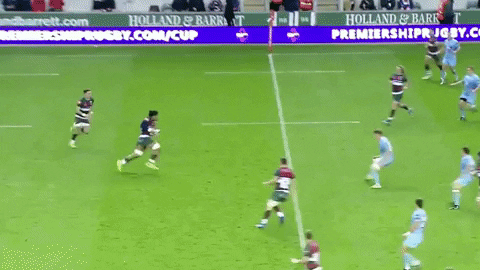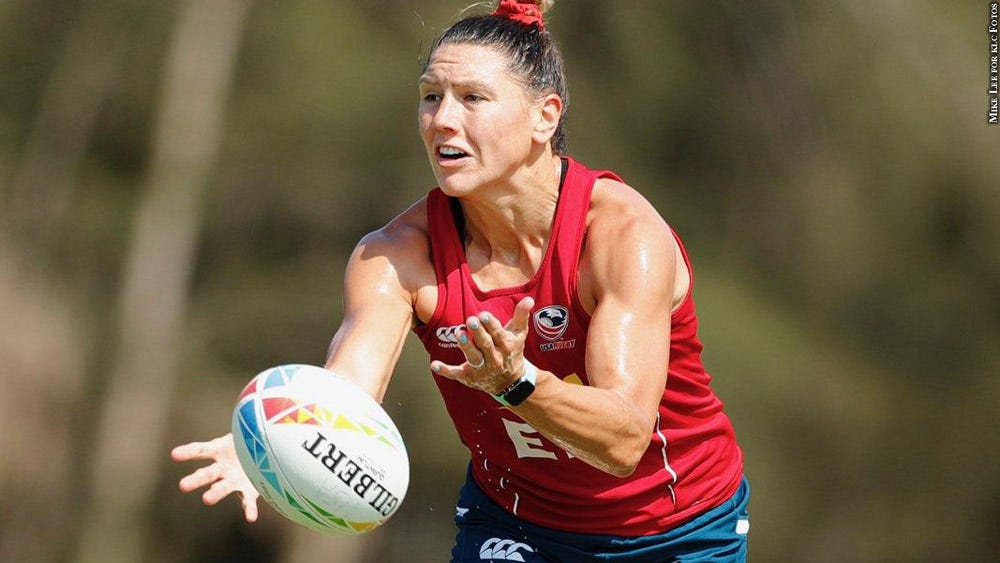The Physiology of Rugby Players
8 minute read · Issue Number 77 · July 16th, 2021
Welcome to another weekly edition of Sports-Tech Biz! Every Friday, we learn about intriguing topics related to sports, business, and technology. If you’re reading this online or in a forwarded email, sign up for the newsletter:
Happy Friday!
Rugby is (in my humble opinion) the most physically demanding sport out there due to its intense gameplay and the extensive amount of contact between players.
In today’s STB, we’ll study the physiological requirements for rugby players to succeed in the sport.
Shall we?
Rugby
Rugby is a high-intensity collision-based sport played by over 7 million players across 199 countries, most popularly in Australia, New Zealand, France, Russia, Wales, Scotland, Ireland, and South Africa.
The game is huge; it generates millions of dollars per year, and winning major international competitions is the ultimate goal for national teams.
Physical Demands
Compared to other sports, Rugby carries a higher risk of injury due to the dynamic physical contact between players. Literally — players tackle and get tackled all the time.
Players must have highly developed speed, reactive agility, muscular strength, power, and aerobic and anaerobic endurance.
The reason?
Well-developed physical qualities minimize post-match fatigue, lower the risk of injury, and facilitate recovery.
Physiological Characteristics
Research has found that significant muscle damage and fatigue occur in the athletes’ bodies after rugby matches. While muscle function and perceptual fatigue generally return to baseline 48 hours after the game, full-body recovery can take up to 5 days postmatch.
These are a few physiological characteristics that help athletes endure the sport:
Body Composition
On average, rugby players have higher body mass and percentage body fat than other team sports players (like soccer).
The reason?
A higher percentage of body fat may protect the players from impact injuries.
Aerobic Power
Professional rugby players’ training is REAL – they get to practice about 5-6 times per week with multiple sessions each day.
Research has found that rugby athletes report above-average mean maximal oxygen uptake (VO2 Max) overall – compared to different team sports.
Speed & Sprint Ability
Rugby league players require the ability to move quickly and repeatedly sprint to position themselves in attack and defense.
Rugby requires the ability to generate high levels of power and then recover quickly to make other high-intensity efforts.
Muscular Strength and Power
The capacity to rapidly generate high levels of muscular force is a crucial characteristic of successful rugby league players.
Players tackle, lift, push and pull opponents during a match – all those actions require massive strength and tons of upper and lower-body muscular power.
The Bottom Line
Rugby players require a broad range of physical and technical skills developed through specific training.
The game is so dynamic. For example, a player may need to move quickly off the defensive line, make a cover-defending tackle, and then chase from first marker. Damn – even reading that feels exhausting!
Due to the demanding nature of the sport, coaches incorporate drills that replicate the most intense repeated high-intensity demands of competition to prepare players for the worst-case scenarios expected during match-play.
🎙 Halftime Snack of the Week
Helping Athletes Build and Protect their Name, Image, and Likeness (NIL)
This week's Halftime Snack features Christopher Aumueller – former Division 1 tennis player and the CEO and founder of FanWord — a platform that helps college athletes to build, monetize, and protect their brands.
In this episode, we discussed NIL in college sports, the story and types of business models of FanWord, brand management, and more.
Listen on Apple | Spotify | Google
QUICKIES
🏈 NFL Running Back Saquon Barkley To Receive All Marketing Revenue In Bitcoin; Barkley will convert his income into bitcoin using Lightning Network platform Strike
⛹🏽♀️ Candace Parker To Be First Woman Featured On Cover Of NBA 2K Video Game; "It's a benchmark of women's basketball for sure. I think most importantly, it speaks to visibility and how important it is and how important the WNBA is."
🎫 The future of your NBA tickets is virtual - and non-fungible; "Understanding that you may not see the value in something, but the way we see value evolves, is important for understanding how NFTs are going to proliferate into the future."
👕 Ralph Lauren Introduces RL Cooling Technology for Team USA at the Olympic and Paralympic Games Tokyo 2020; “Recognizing Tokyo’s summer heat, we sought to develop a solution for Team USA that fuses fashion and function—allowing them to look and feel their best on one of the world’s biggest stages.”
On the emoji scale, how much did you enjoy today’s newsletter?
🙄 | 😐 | 🙂 | 😃 | 🤩
Until next week,
Ronen Ainbinder
Twitter: @Ronenain
Website: ronenainbinder.com
-
Sports-Tech Biz
Twitter: @sports_techbiz
Instagram: @sportstechbiz
Read more: sportstechbiz.substack.com.
-
Halftime Snacks Podcast







